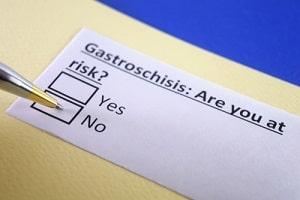Chicago, IL 60601
FREE CONSULTATIONS 312-462-4200
TOLL FREE 833-462-4200
Recent Blog Posts
Does COVID-19 Increase the Risks of Birth Injuries?

The coronavirus pandemic has affected everyone in the United States, and people have had to make different types of adjustments to their lives to avoid the health risks that can result from contracting COVID-19. Pregnant women are likely to be especially concerned, since giving birth in a hospital may increase the risks of infection. It is important for mothers to understand whether their child may suffer birth injuries related to COVID-19 or whether they will be at an increased risk of maternal injuries or other complications.
Studies Show Higher Rates of Complications for Mothers With Coronavirus Infections
Expectant mothers may be concerned about how their child will be affected if they contract COVID-19 while pregnant. Fortunately, while some maternal infections have been known to cause harm to a child, preliminary research indicates that it is rare for a coronavirus infection to be passed from a mother to a child, and children are unlikely to experience birth defects.
The Risks of Maternal Injuries During Childbirth in the United States

As one of the richest countries in the world, the United States should be able to provide quality healthcare to mothers and children during the process of pregnancy, labor, and delivery. Unfortunately, even though medical facilities have made a serious effort to reduce birth injuries to children, the same level of care is often not provided to mothers. In fact, the U.S. has the highest rate of maternal death among developed countries, with hundreds of women dying during childbirth each year. Perhaps even more concerning, however, is the increasing rate of serious maternal injuries, known as severe maternal morbidity. These types of injuries affect mothers in more than 1 percent of all births, adding up to over 50,000 cases each year.
What Is Maternal Morbidity?
What Can Cause Skull Fractures for Newborns During Childbirth?

The process of labor and delivery can sometimes put strain on the body of a child. During a vaginal delivery, a child’s head must pass through the birth canal, which can put significant pressure on the skull and brain. While the bones of a newborn’s skull have not yet fused together, allowing for some flexibility during birth, delivery can still cause compression to the child’s head, and in some cases, an infant may experience a skull fracture.
A fractured skull can be very dangerous for a newborn, and it can cause permanent brain damage and lead to a variety of other complications. If a fracture results in the bones of the skull pressing into the child’s brain tissue, this can result in conditions such as cystic encephalomalacia. Bleeding around the brain can cut off blood flow, leading to neonatal stroke or hypoxic ischemic encephalopathy (HIE). Damage to the brain can cause permanent conditions such as cerebral palsy (CP).
What Types of Birth Injuries Can Be Caused by Vacuum Extraction?

Every expectant mother hopes that her delivery will go as smoothly as possible. However, complications during the birthing process sometimes necessitate the use of special procedures and equipment that may present a risk to the baby. Vacuum extraction or vacuum-assisted delivery is a procedure used during a vaginal delivery when a baby needs help traveling through the birth canal. A device called a vacuum extractor creates suction on the baby’s head and allows the doctor to gently pull the infant out while the mother pushes. Although vacuum extraction is a common procedure, it is also associated with an increased risk of serious, sometimes life-threatening birth injuries.
Why Is a Vacuum Extractor Used During Labor and Delivery?
If labor is not progressing normally, a vacuum extractor may be used to encourage the baby through the birth canal. Vacuum extraction is often used when a mother experiences ruptured membranes or trouble pushing the baby out. Atypical heart rate indicating infant distress may also prompt an obstetrician to use vacuum extraction. This procedure is typically not recommended if a woman is less than 34 weeks pregnant, the infant suffers from certain health conditions such as hemophilia or osteogenesis imperfecta, the baby is in a breech position, or if the baby’s head is too big to fit through the mother’s pelvis.
The Prevalence of Infants Suffering From Gastroschisis Has Increased

Despite the remarkable medical advances that have taken place in recent decades, birth injuries continue to be an unfortunate reality in the United States. While some birth injuries are easily remedied and do not result in lasting damage to the infant, others result in lifelong complications or even infant death. Gastroschisis is a congenital birth defect in which an infant’s intestines protrude through his or her abdominal wall. Surgery is necessary to correct the abnormality, but unfortunately, surgery is not always enough to prevent the infant from suffering major health complications or even death.
The Causes of Gastroschisis Still Largely Unknown
Gastroschisis occurs when the abdominal wall of a growing fetus does not develop properly and a 1- to 2-inch opening in the abdominal wall forms. This allows the fetus’s intestines to extend outside of its body. The intestines are then exposed to the amniotic fluid and may become inflamed, twisted, or shortened. In complex cases, other internal organs may also protrude through the abdominal opening. Since the 1980s, more and more babies have been born with gastroschisis. In fact, the Centers for Disease Control and Prevention (CDC) report that the incidence of gastroschisis nearly doubled between 1995 and 2005. Younger mothers and mothers who drink alcohol and smoke cigarettes during pregnancy are more likely to have babies with gastroschisis; however, the exact cause of the defect is still unknown.
What Types of Birth Injuries Can Be Caused By a Breech Birth?
 A baby’s transition from the womb into the outside world is a critical moment. If complications arise during the birthing process, the baby can suffer injuries that affect him or her for the rest of his or her life. One common complication that can lead to serious medical conditions is a breech birth. Babies should be born head first. However, in 3-4 percent of births, the baby is not positioned in the correct way. Breech presentation increases the risk of serious birth injuries and even infant death in some cases.
A baby’s transition from the womb into the outside world is a critical moment. If complications arise during the birthing process, the baby can suffer injuries that affect him or her for the rest of his or her life. One common complication that can lead to serious medical conditions is a breech birth. Babies should be born head first. However, in 3-4 percent of births, the baby is not positioned in the correct way. Breech presentation increases the risk of serious birth injuries and even infant death in some cases.
Causes of Breech Presentation During Birth
A baby is in a breech presentation if he or she is positioned in such a way that his or her buttocks or feet will enter the birth canal first. Breech presentations are more common when certain risk factors are present. These factors include but are not limited to:
What Types of Maternal Infections Can Lead to Infant Injury or Death?
 Anticipating the birth of a new child is often one of the most exciting times in a mother’s life. Unfortunately, many mothers have seen their joy turn to fear after experiencing an unexpected complication during pregnancy, labor, or delivery. One complication that can be especially dangerous to the health of the baby and the mother is a maternal infection. If a pregnant woman develops an infection and it is not treated properly, the pathogens may be passed on to the developing baby. Newborns can also develop an infection from bacteria, viruses, or other pathogens that are present in the hospital delivery room.
Anticipating the birth of a new child is often one of the most exciting times in a mother’s life. Unfortunately, many mothers have seen their joy turn to fear after experiencing an unexpected complication during pregnancy, labor, or delivery. One complication that can be especially dangerous to the health of the baby and the mother is a maternal infection. If a pregnant woman develops an infection and it is not treated properly, the pathogens may be passed on to the developing baby. Newborns can also develop an infection from bacteria, viruses, or other pathogens that are present in the hospital delivery room.
Some Maternal Infections Can Cause Life-Threatening Injuries
Although minor maternal infections, such as a common cold, may not pose a major risk to the baby, other infections can be life-threatening. Infections that can be especially dangerous to an infant include:
-
Urinary Tract Infections (UTI): Most people experience a urinary tract infection at least once in their life. Typically, these infections are easily treated with antibiotics and do not cause any long-term damage. However, if a pregnant mother develops a UTI and it is not treated properly, the infection can cause premature birth, sepsis, preeclampsia, and low birth weight.
What Are the Causes of Maternal Death in the United States?

When a pregnant mother goes into labor, she may be much more concerned about the health of her unborn child than her own health. The thought that she could pass away during labor or delivery may never even cross her mind. Tragically, maternal death is a major problem in the United States. Between 700 and 900 mothers pass away every year in this country from pregnancy-related complications. In fact, the United States has a higher maternal death rate than all other developed nations. Even more concerning, the rate at which pregnant mothers are dying has increased in the last few decades despite advances in prenatal care. In some cases, medical error or negligence may have caused maternal death.
Factors That Contribute to Maternal Mortality
The Centers for Disease Control and Prevention (CDC) defines a pregnancy-related death as one involving the death of a mother during pregnancy or within one year of the end of the pregnancy. In 1987, the first year for which the CDC collected data about pregnancy-related death, there were 7.2 maternal deaths per 100,000 live births. By 2016, this rate had more than doubled. The top cause of pregnancy-related death in the United States is hemorrhaging or excessive blood loss. Other top causes of maternal death include:
Is CBD Oil a Safe Treatment Option for Children with Cerebral Palsy?
Cerebral palsy (CP) can cause uncontrolled movement, difficulty swallowing, problems with walking and coordination, chronic pain, and a long list of other debilitating symptoms. If you are a parent of a child with cerebral palsy, you may be willing to try almost anything to give your child some relief from his or her symptoms. One medication you may be curious about is Cannabidiol, or as it is better known, CBD oil. There is still much to be discovered about this substance and how it can be safely used as a medication for children. However, there are also many parents who praise the substance’s ability to reduce their child’s CP-related symptoms.
What Is CBD Oil?
Cannabidiol is a chemical compound found in cannabis plants. Unlike tetrahydrocannabinol (THC), the main psychoactive compound found in cannabis, CBD is not psychoactive. It does not produce the feeling of being “high.” However, the substance may be able to provide some of the same pain-relieving and calming benefits that THC-containing marijuana provides. CBD oil is often taken sublingually, meaning it is placed under the tongue and allowed to enter the bloodstream through capillaries in the mouth. It may also be taken orally in capsule form or even used topically in the form of CBD-infused lotions and creams.
What Birth Injuries Can Result From Failure to Perform a C-Section?

A cesarean section, or “C-section” for short, refers to a surgical procedure during which an infant is born via an incision in the woman’s abdomen. An emergency C-section typically occurs when a mother planned to give birth vaginally, but unexpected complications make a C-section the safer choice. Doctors and medical staff are trained to recognize signs of fetal or maternal distress that may indicate a C-section is needed. In some cases, a physician’s failure to perform a necessary C-section may lead to serious birth injuries and even fetal or maternal death.
Medical Complications That Can Lead to an Emergency C-Section
Just under one-third of U.S. mothers who gave birth to a child in 2017 did so via cesarean delivery. Choosing to deliver a baby naturally or undergo a C-section is a very personal decision for expectant mothers. Many women understandably have strong feelings about whether or not they want their baby delivered surgically. Unfortunately, some expectant mothers do not have the birth experience they had hoped for because unexpected medical complications arise. A cesarean section is typically considered to be a riskier delivery method than vaginal birth. However, when a mother and her baby are in danger, this may be the best way to prevent birth injuries or fetal death. Some medical issues that may require an unplanned C-section include:






